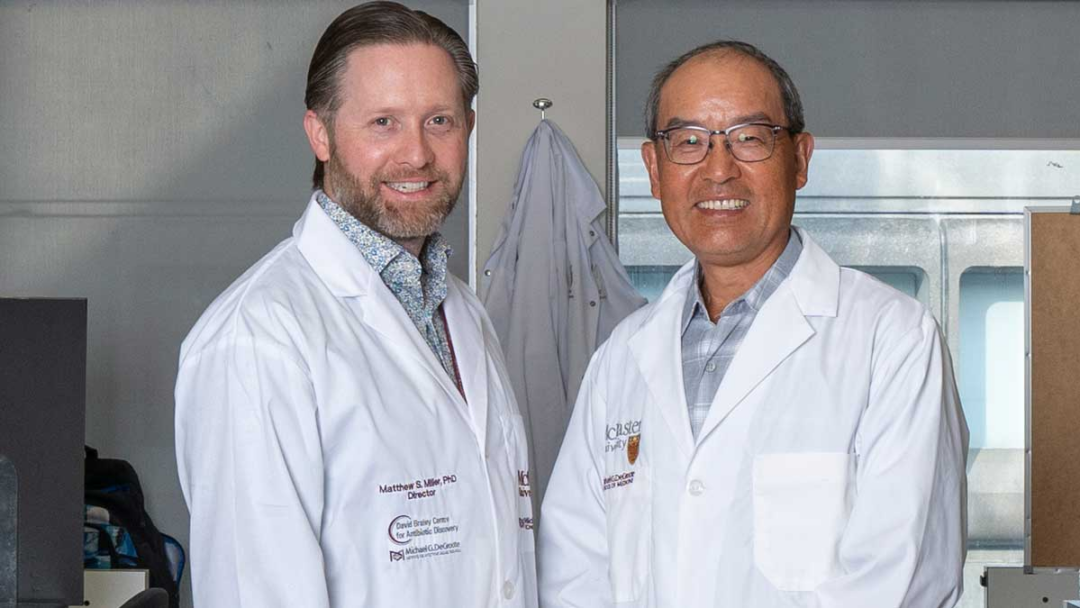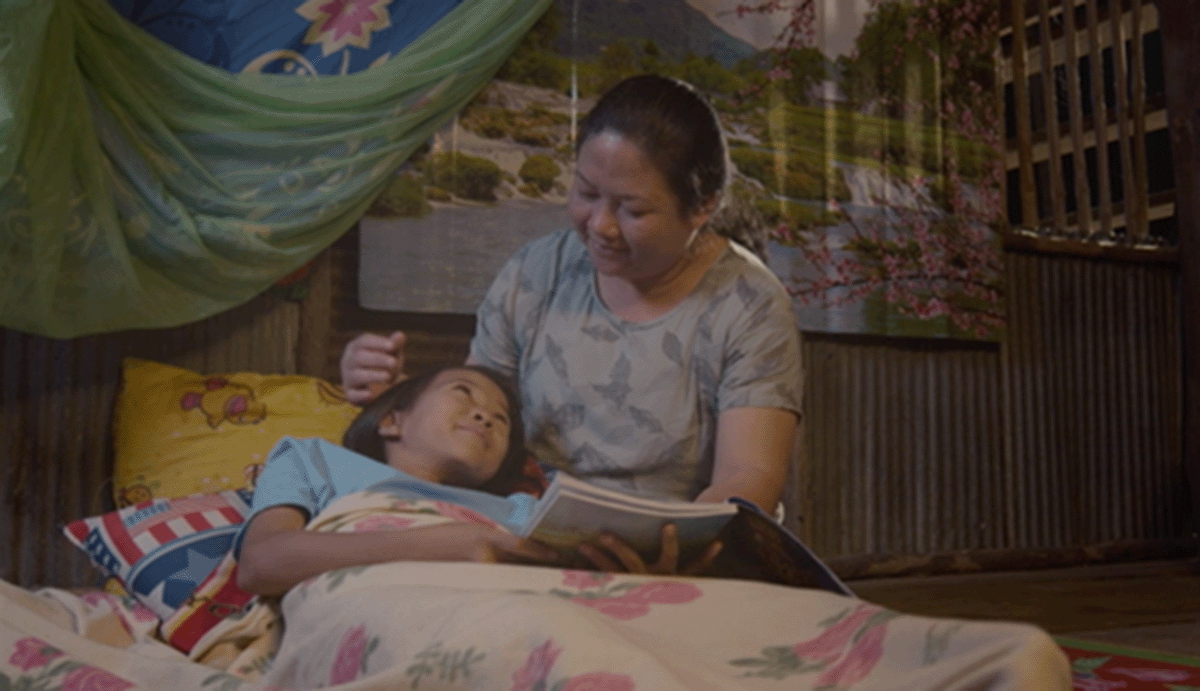McMaster researchers discover new way of creating protection against infections like COVID-19

An exciting therapeutic discovery involving synthetic aptamers being worked on by researchers at McMaster University is showing promise in protecting against viral infections like COVID-19.
McMaster researchers Matthew Miller and Yingfu Li, along with a team of scientists, have been conducting experiments with synthetic aptamers. These aptamers are made up of DNA – genetic material – that can be fashioned to stick to various targets, much like antibodies.
One of the aptamers Li created is able to bind to all variants of SARS-CoV-2, the virus that causes COVID-19. This aptamer was then handed over to Miller’s team who wanted to see if it could block the virus from infecting cells.
“What we actually found is amazing,” says Li, a professor with McMaster’s Department of Biochemistry and Biomedical Sciences who directs a lab at McMaster that works on developing new aptamer technologies for diagnostics and therapeutics.
What Li’s lab discovered is that this aptamer, which was originally intended to detect viruses, could bind to a part of the virus that is used to enter cells. This is similar to what happens when our body creates antibodies to combat a virus.
Researchers then created a treatment where the aptamer was given directly into the respiratory tract of mice. They then exposed the mice to the COVID-19 virus.
“We found that the aptamer protected the mice from infection just as well as the clinically approved antibodies that have been used during the pandemic,” says Miller, director of McMaster’s Michael G. DeGroote Institute for Infectious Disease Research and executive director of Global Nexus. “It’s very exciting.”
Unlike current antibody treatments that need to be adjusted as the virus mutates, the aptamer method can provide protection for all descendants of the COVID-19 virus.
“What’s really cool is that this aptamer is able to neutralize or prevent infection with variants for which all of the previously approved antibodies no longer work,” Miller says.
Another benefit is cost. Antibodies are expensive to make and require specialized equipment to administer. Li believes the cost for the aptamer treatment could be reduced by a minimum of 100-fold compared to antibodies, with an aim of it costing around $10 to make.
Aptamers, the ‘new kid on the block’
Historically, aptamers have been studied most intensely as diagnostic tools, but have been less successful as therapeutics.
“Antibody therapy has been well-established, and aptamers are still the new kid on the block,” says Li.
One of the reasons aptamers haven’t been used in the way Li and Miller have discovered is due in part to preconceived concerns it would break down too quickly in the body.
“What we found is that we can give one dose of aptamer a full day before we infect these animals. And the aptamer is still 100 per cent protective,” Miller says.
This is very important if the drug is to ever be used in humans because it would need to be administered in reasonable intervals. Miller says this suggests a once daily dose could be sufficient in providing protection.
This is also why Miller’s team is experimenting with topical treatments like a nasal spray that would facilitate easy, at-home administration.
Practical use of aptamers
Miller describes synthetic aptamers as a platform technology, meaning it could be applied to all kinds of different viruses.
“We can make aptamers that are specific to seasonal flu, avian flu, and any other virus that were to emerge,” Miller says.
The discovery by Li and Miller could also be a game-changer in protecting some of the most vulnerable people in Canada, especially those living in long-term care homes.
“Exposure risk in those facilities is very high, and older individuals are often more at risk of serious illness from these viruses. So, if we have a spray that can be administered daily, for example, it could provide them with a critical additional layer of protection,” Miller says.
Ideally, the researchers want to see this as an over-the-counter treatment that anyone can pick up at their local pharmacy. If that happens, Miller believes the benefits could extend to parents who have sick toddlers or even travellers looking to avoid picking up a virus on a packed flight.
The next steps
Li and Miller are still making modifications to the aptamer to improve further stability in humans.
But the possibility of a phase one trial isn’t that far off. Once preclinical testing is complete, a clinical trial application will be compiled and sent to Health Canada for approval. This is the typical process any treatment needs to go through before a phase one trial happens.
If approved, treatment would begin in humans on a small scale. Miller believes this could happen in 12 to 15 months.
“Because there are aptamers approved for ocular diseases, we know that there is a precedent for these to be safe in humans. We would obviously be thinking about a different route of administration, so that needs to be considered, which is why you still have to do safety trials,” he says.
McMaster is collaborating with Zentek Ltd., a Canadian-based technology company located in Guelph, Ont. The company owns the exclusive, global licensing rights for all aptamer-based technology from the collaboration with the university.
“Zentek is excited to launch this new venture with the amazing researchers at McMaster University. Dr. Yingfu Li and Dr. Matthew Miller are leaders in their respective disciplines, and we believe combining their experience and the great teams they have assembled will result in something truly special,” said Greg Fenton, CEO of Zentek, in an Oct. statement announcing the launch of a subsidiary for aptamer-based tech.
Li says Zentek is an important part of the future for their aptamers as they provide top-of-the-line insight on industrialization and commercialization if the therapeutic is approved for use in humans.
ResearchRelated News
News Listing

Brighter World ➚
Analysis: Ontario’s high-stakes bet on iGaming: Province profiting from online betting but at what cost to problem gambling?
Research
1 day ago

The power of cinema: Study shows film intervention reduces violence against children
Dept. Psych, Offord Centre for Child Studies, Research
4 days ago

